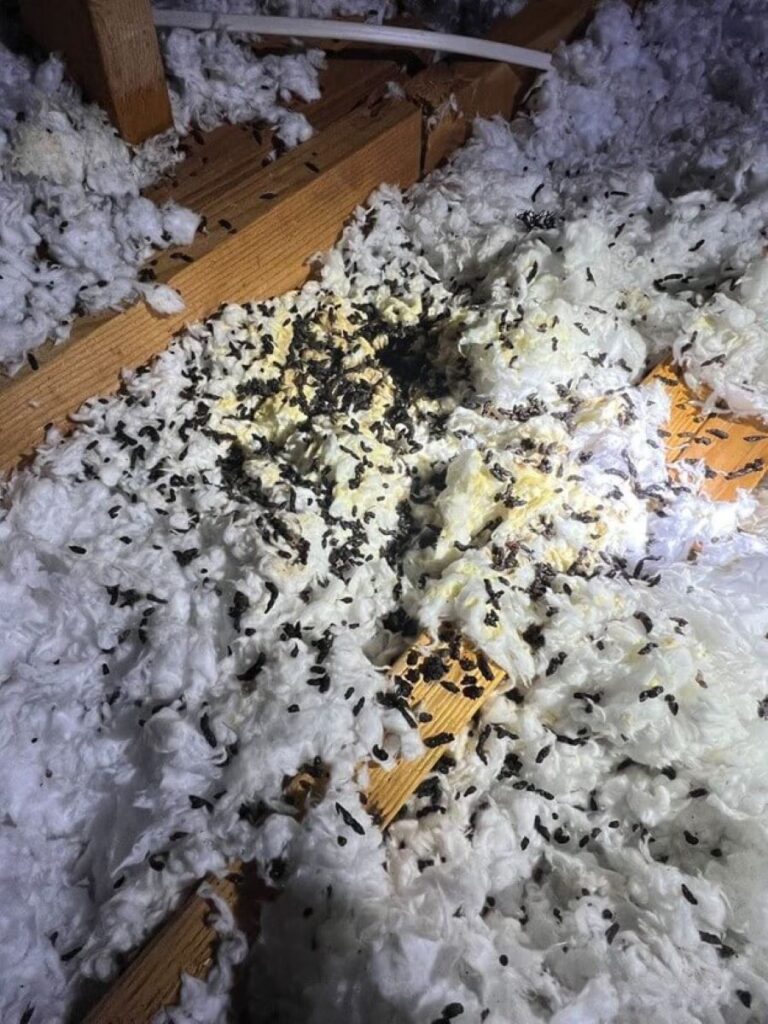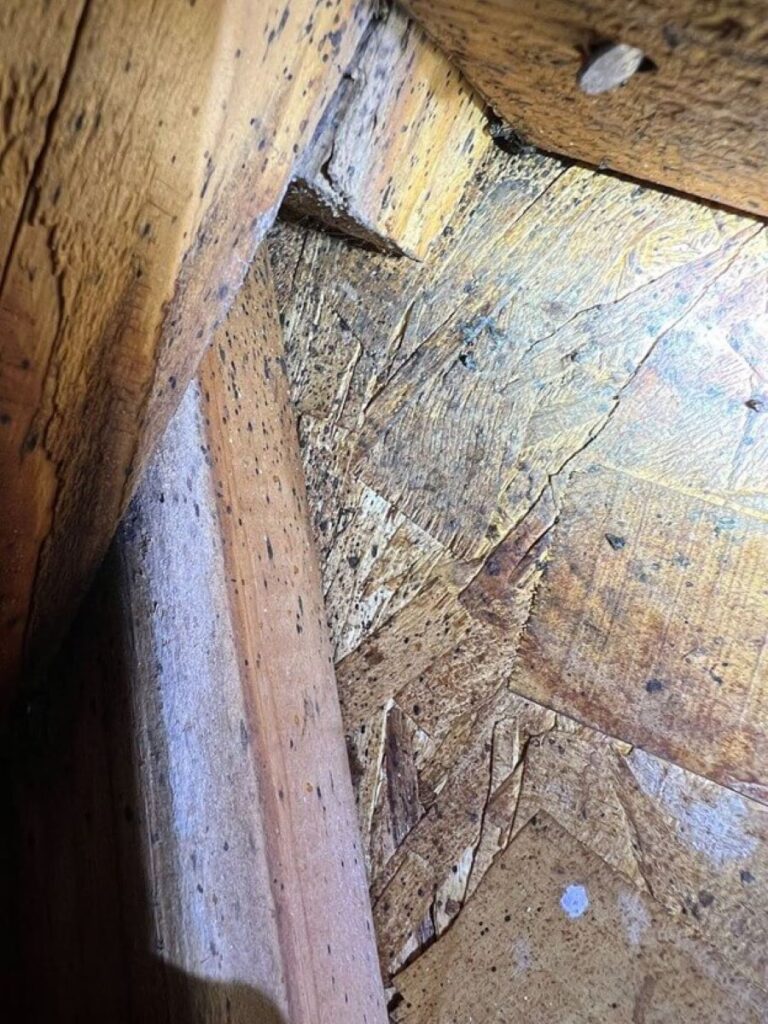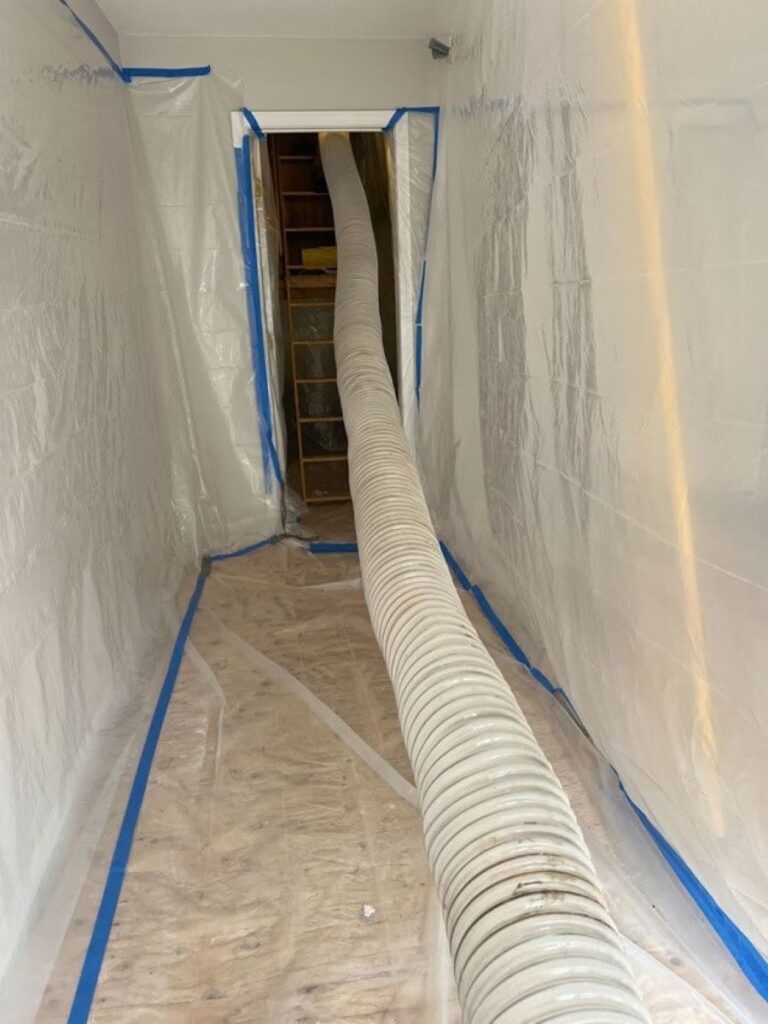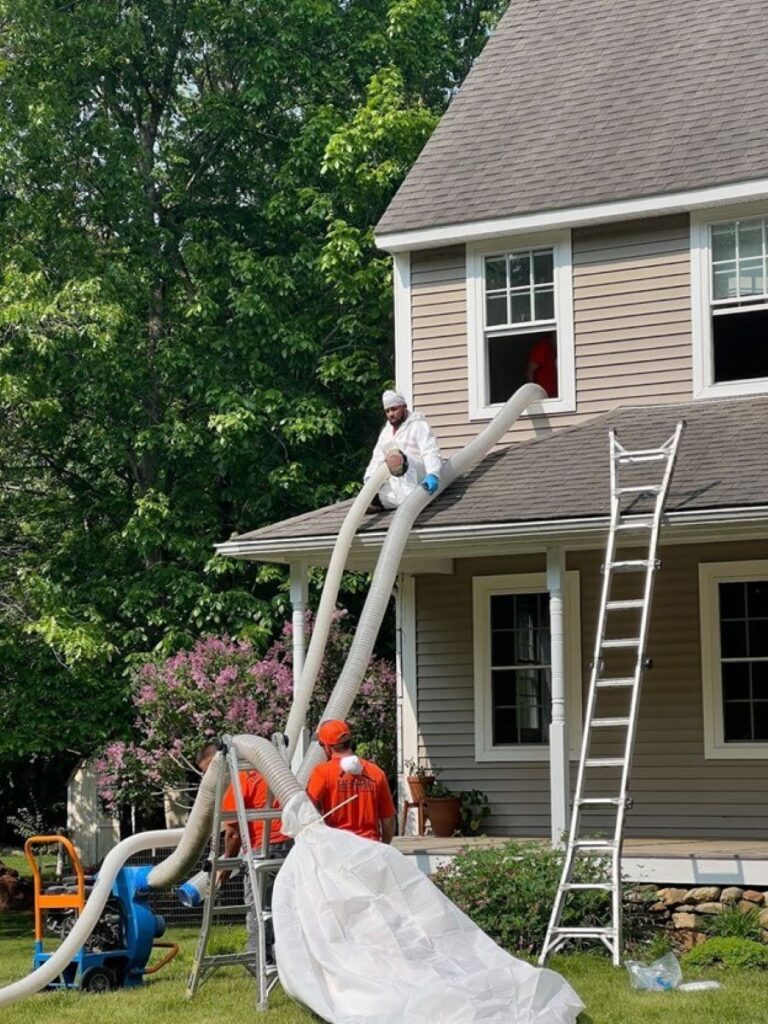Identifying and Treating Bat Bugs: How One East Hamden Home Eliminated These Uncommon Pests
When is a bed bug not a bed bug? That is an interesting question.
Bat bugs look nearly identical, but they have different feeding habits and slightly different habitats. If you are like many people, you might not have heard of bat bugs. If you do encounter them, you will likely mistake them for bed bugs. That’s exactly what happened to one East Hamden, Connecticut, homeowner.
Catseye Pest Control responded to a call from a customer who recently purchased a home in East Hamden and found bat droppings in the attic. The client, who was eight months pregnant with the couple’s second child, explained that they had just moved into the home. She also revealed that she found a bug in her bed and showed the pest inspector a photo of the offending insect.
With a decade of experience and a record of inspecting more than 10,000 homes, the Catseye inspector quickly realized that although the pest in the photo looked like a bed bug, the circumstances didn’t sound like a typical bed bug scenario.
Spoiler alert: They weren’t bed bugs at all.
So, let’s explore what bat bugs are and how to get rid of a bad bug infestation through the lens of our client’s experience. We will also detail how Catseye identified the infestation and applied effective bat bug treatment options.
What Are Bat Bugs?
Although bed bugs are a well-known challenge faced by homes and businesses across the United States, a lesser-known relative of this blood-sucking pest is seemingly on the rise. To the naked eye, the two are indistinguishable.
Bat bugs (Cimex adjunctus) look nearly identical to bed bugs (Cimex lectularius). However, these two pests have different habits and require different approaches to achieve lasting elimination. Understanding bat bug habits and where they live can help make identification easier.
Bat Bug Habits and Habitat
Bed bugs typically live in just about any dark, protected location near their hosts, which are primarily humans, although they will feed on other animals. Bat bugs, however, remain close to bat colonies. These tiny, dark brown or beige-colored pests only wander when their hosts abandon them. They look nearly identical to bed bugs, with flat, tiny, oval-shaped bodies that easily tuck into small spaces. Under a microscope, it’s possible to spot one of the only physical differences: longer hairs along the bat bug’s upper thorax.
Are Bat Bugs Dangerous?
Although bat bugs may bite humans, they cannot survive on human blood. These pests can only molt and reproduce on a diet of bat blood. Bat bugs aren’t known to carry diseases or pose a danger to people or other animals, but their bites may cause itching and mild irritation.
The presence of bat bugs can cause significant anxiety for homeowners and businesses. This is particularly true when the tiny pests are found in commonly used interior spaces and beds, as was the case with our client. The bigger danger is the presence of bats, which can carry rabies. Additionally, bat excrement can grow a fungus that causes histoplasmosis, a respiratory disease.
Signs of a Bat Bug Infestation
What should you look for if you suspect an infestation? Bat bugs are most commonly found in and around bat colonies. They are relatively rare for pest control professionals to encounter.
In the case of Catseye’s East Hamden client, the inspection revealed clear signs that they were dealing with bat bugs. The homeowner found small bugs that looked identical to bed bugs in her bed.
Signs of an infestation to watch for include:
- Presence of live bugs, small and reddish-brown in color, on furniture, walls, and other surfaces
- Dead insect skins or small white eggs found in crevices, including the seams of furniture and mattresses
- Stains on upholstery and linens
- The presence of bats in and around the property
Signs of Bats
In the case of Catseye’s client, the technician became sure they were dealing with bat bugs after discovering evidence of a long-established bat colony. Inspection of the attic revealed not only live bats but also bat bugs found directly below where the bats roosted. The signs included:
- Guano accumulation
- Urine-streaked and stained attic walls with a whitish color near the bat colony
- Dark brown sebum staining on attic beams caused by the oils in the bats’ skin
- Presence of live bats

The guano had accumulated in piles up to 2 inches deep, indicating an ongoing problem. Additionally, sebum staining typically takes years to accumulate, leading the technician to believe the bat infestation had been present for a long time. Live bats were roosting in the roof vent and directly below them, and the technician identified many spots that looked like bed bug droppings.

The location of these droppings suggested that they were bat bugs. He also found live bat bugs adjacent to the colony.
How to Get Rid of Bat Bug Infestations
Bat bug treatment starts with eliminating the bats, but before you can do that, it’s critical to identify the exact pest causing the problem. In the case of the East Hamden home, the inspection was a pivotal part of identifying the pest as bat bugs, not bed bugs. It also provided the details and information needed to create a customized, comprehensive treatment plan.
This essential step makes a tremendous difference, as the treatments for bed bugs and bat bugs are vastly different. Treating bat bugs requires the removal of the bats, restoring and abating the affected area, and treating the attic and rooms.
Evicting Bats
Safely removing bats from the premises requires trained professionals. Catseye’s wildlife specialists have extensive training on how and when to eliminate bats from a property. Because they are essential to the ecosystem and protected by many state and federal laws, removal can only be performed at certain times of the year. Timing is essential to avoid interfering with hibernation, migration, and birthing patterns.
When the timing is right, we install an excluder in the area where bats live. This is a funnel-shaped door that lets bats exit without allowing them to re-enter the home. It’s a perfectly safe and humane way to evict bats.
Disinfection and Bat Bug Treatment
Once the area is free of bats, it’s critical to thoroughly clean the space and apply bat bug treatment to kill any remaining bugs before they find new hosts. For the Catseye’s East Hamden client, technicians started by creating a clean space. This involved removing all insulation, vacuuming to remove debris, and disinfecting all affected areas with hospital-grade disinfectant.

The team wore personal protective equipment (PPE), including Tyvek suits, respirators, and nitrile gloves during the process.

Once the cleaning and disinfection were complete, we applied bat bug treatment in the attic and any rooms where homeowners found bat bugs.
Once the cleaning and treatment process was complete, we began putting things back together. We installed new T.A.P. insulation as an assurance to guard against any hidden bat bugs and comply with all local building codes. Catseye also provided follow-up inspections and treatments as needed to provide peace of mind.
Exclusion Services
Preventing bats from ever returning is mission-critical for long-term success. Although every scenario is unique, exclusion services effectively seal off potential entry points, including gaps, cracks, and holes.
In this case, the technician found gaps between the ridge vent and the interior of the attic. We also found problems with the chimney flashing and a gap between the main roof and a dormer. To seal off any potential entry points, Catseye installed our Upper Cat-Guard Exclusion System and RidgeGuard.
One of three Cat-Guard Exclusion Systems, this provided a permanent barrier to keep bats, rodents, and other wildlife from entering the upper portion of the home. The technician fastened the RidgeGuard, a PVC-coated mesh, to the ridge on either side. This system allows proper ventilation while preventing animals and other pests from gnawing through or getting inside.
Contact Catseye for More Bat Bug Treatment Information
Our East Hamden client was able to restore peace of mind and enjoy their home without worrying about bats and a bat bug infestation. The best way to get rid of bat bugs is by partnering with a professional with the expertise and equipment needed to get the job done correctly. From the initial inspection to follow-up visits and recurring treatments as needed, Catseye always has our clients’ best interests in mind. We also offer extensive training and state-of-the-art equipment.
Get in touch with us today to schedule your free inspection or to learn more about our services.
The post Identifying and Treating Bat Bugs: How One East Hamden Home Eliminated These Uncommon Pests appeared first on Catseye Pest Control.
This article appeared first on Catseye Pest